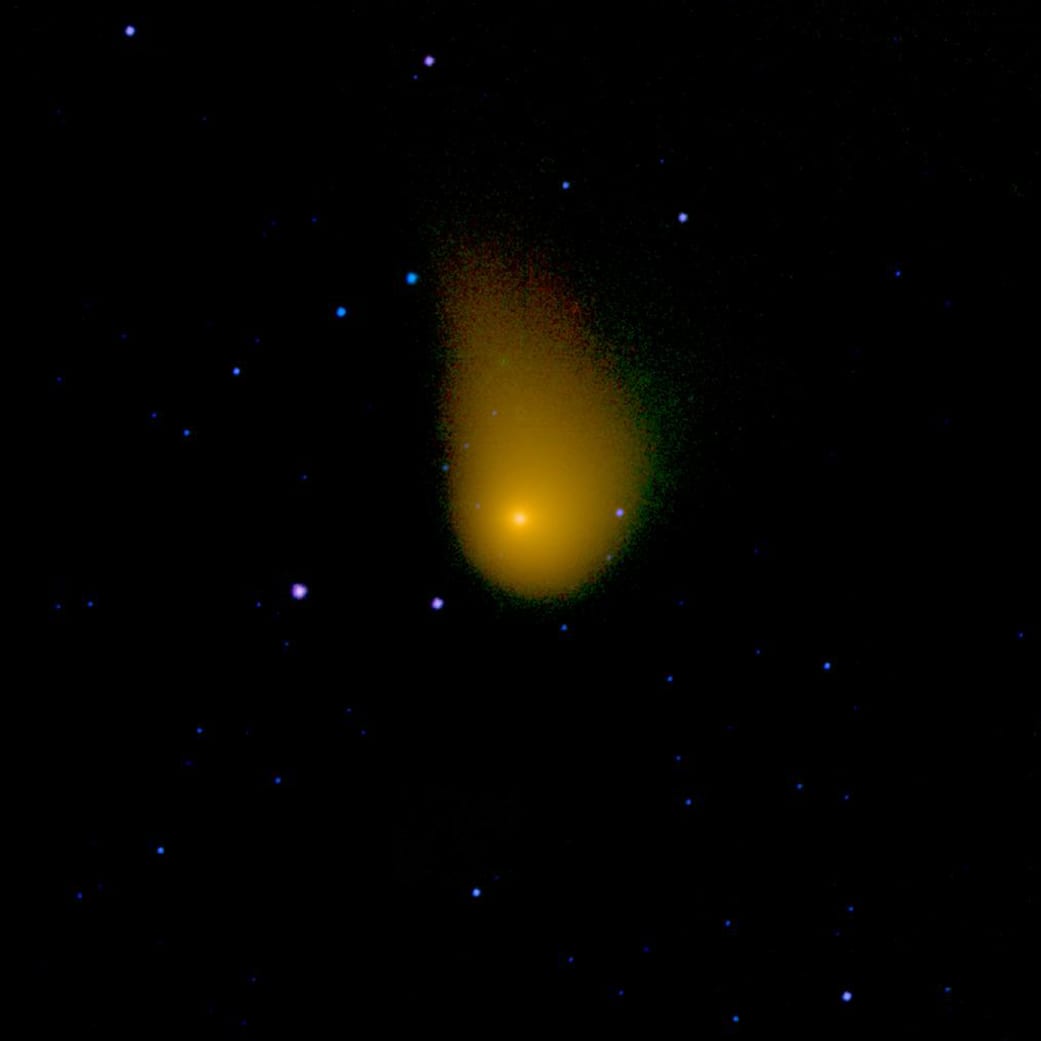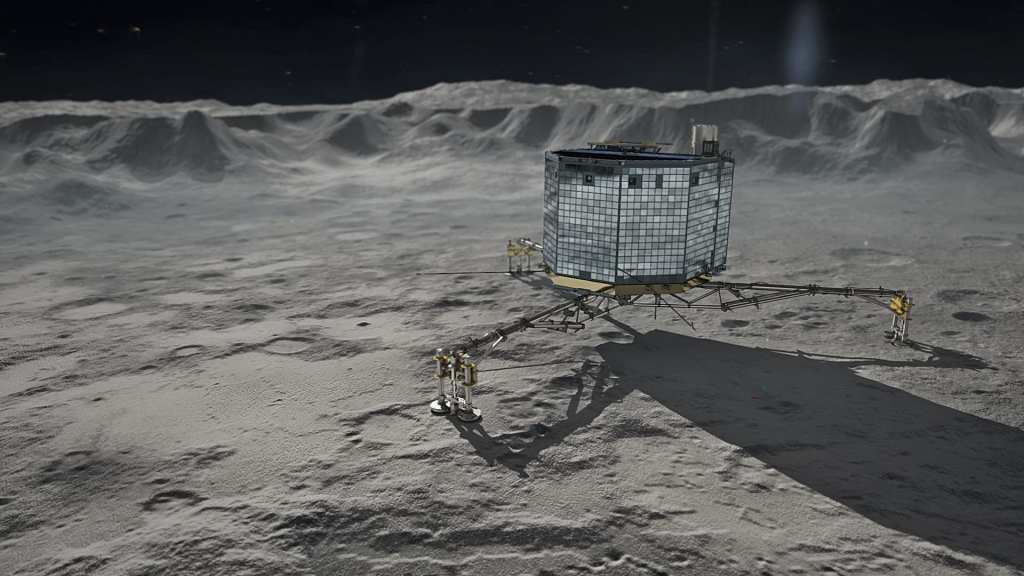Comets are strange little things. They are really large space snowballs, with an icy center surrounded by frozen gasses, rocks and dust, orbiting the sun.
When they are completely frozen, comets are about the size of a town. But when one gets close to the sun, it heats and starts spewing the gasses and dust until it forms a giant glowing head larger than many planets.
Then the dust and the gasses form a tail stretching for millions of miles away from the sun.

Photo Credit: NASA
With some fascinating footage obtained by the European Space Agency’s (ESA) Rosetta spacecraft, we earthlings got to see that this phenomenon looks a lot like a cosmic snowstorm when you are standing on the surface.

Photo Credit: European Space Agency
Back in 2016, Rosetta’s mission was to follow a comet to see what happens as it approaches the sun. The comet was the Comet 67P/Churyumov–Gerasimenko. This was important work for the spacecraft because predicting what the sun would do to a comet proved way too difficult from Earth.
Comets are a part of our solar system and they carry materials showing what our solar system looked like billions of years ago before planets were formed.

Photo Credit: Wikimedia
Eberhard Grün, an interdisciplinary scientist working on the Rosetta mission at the Max Planck Institute for Nuclear Physics in Germany, said, in a statement,
“Rosetta has completely changed our picture of comets.
Previously, they were pictured as dirty ice balls — or, as some prefer, icy dust balls — but now we know them, or at least this one, to be geologically complex worlds where a myriad of processes are at work creating the incredible surface structure and activity of the comet.”
Rosetta’s mission is over, but the data was invaluable to scientists.
As for the general public, the images it brought back inspired art, music and poetry–all celebrating how much we love to look at the stars.






